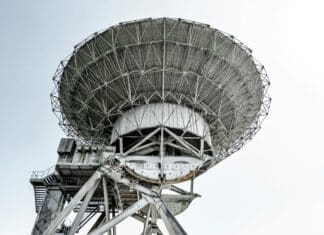This post is also available in:
 עברית (Hebrew)
עברית (Hebrew)
Meet the new, ultra-light, delicately designed robotic bee by Festo’s Bionic Learning Network (known for developing products inspired by nature) – the BionicBee.
These bee-inspired drones can operate autonomously as part of a swarm, and their lightweight construction offers them great maneuverability and flight duration. Weighing 34 grams and measuring 22 centimeters in length and 24 centimeters in width at the wings, the BionicBee is the smallest flying object from the Bionic Learning Network (BLN) to date.
According to Interesting Engineering, this is the first time BLN’s developers used the “generative design” method, in which a piece of software is given a few parameters and determines the best structure based on particular design principles. A major advantage of this method is that it utilizes the least amount of material required to produce the most stable design conceivable. Festo also claims that the drone’s lightweight design is essential for its long flight times and excellent maneuverability.
The BionicBee’s body contains the beating wing mechanism, the communication technology, the control components for the wing beats, and the adaptation of the wing geometry. The drone has several different motors that can interact intelligently with the mechanics, meaning that the frequency of the wing beats can be adjusted for various maneuvers, for example. The drone’s wings move at a 180-degree angle back and forth and beat without backlash thanks to an incredibly light and carefully mechanical architecture that is led by the brushless motor.
The bees’ autonomous behavior is made possible by an interior localization system using ultra-wideband technology, meaning the bees can arrange themselves in the area and precisely measure the relevant runtime; The individual bees receive signals from the UWB anchors and use the time stamps to determine their own position in space and measure the distances to the transmitters on their own.
Finally, the clever programming of the bee-drone can determine the hardware variations between individual bees, which makes it possible to externally control the entire swarm as if every bee were the same.
This information was provided by Interesting Engineering.


























